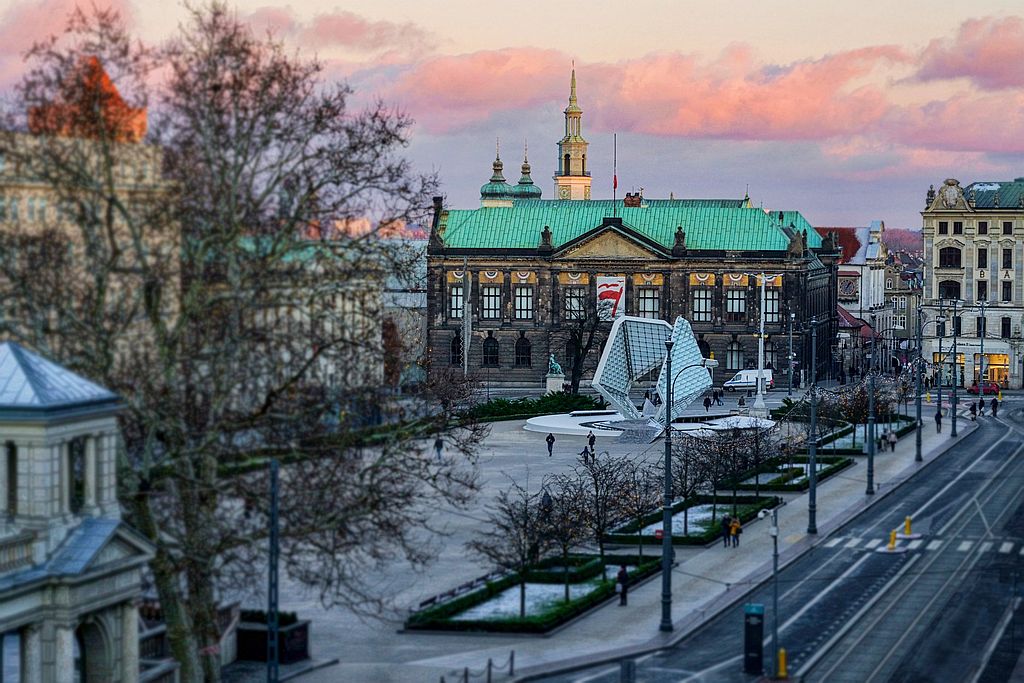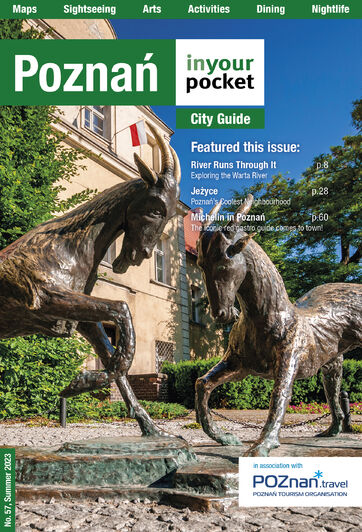Though it is difficult to imagine now, Poznań’s large and typically empty 'Freedom Square' was once the heart of the city - a favourite spot of the upper classes for strolls and coffee. Originally named Wilhelmsplatz (William’s Square) in honour of King Frederick William III of Prussia, it was demarcated by the city’s new Prussian authorities at the very end of the 18th century, soon after Poland was wiped off the map by the three partitioning forces of Prussia, Russia, and Austria-Hungary. The main reason for a square this large? Big-headed higher-ups needed a representative space capable of containing an entire infantry regiment during military parades. A fire in 1803 helped to “clean up” the area, and a Jewish cemetery was liquidated to make more space, while a new theatre was built to give the square a touch of class (today the renovated building, known as Arkadia, houses an Empik bookstore and tourist information centre). For a brief period between the 1806 Wielkopolska Uprising (and subsequent invasion of Prussia by Napoleonic forces) and the 1815 downfall of the semi-independent Duchy of Warsaw, the square was renamed in honour of Napoleon, and things were looking up for Poznań’s Polish populace; then it was back to Wilhelmsplatz and Prussian parades.

In the years leading up to the Great War the square underwent numerous changes, as Polish and Prussian institutions vied for space and influence, encircling the space with buildings designed according to the latest architectural fashion; those included St. Adalbert’s Publishing House (now St. Adalbert’s Bookstore aka Księgarnia Św. Wojciecha, no. 1), the Haase Department Store (no. 4), the Brandt Department Store (no. 8), the Raczyński Library (no. 19), the Provincial Museum in Posen (now a National Museum building, Al. Marcinkowskiego 9), and Bazar Hotel (Al. Marcinkowskiego 10). A monument to the 1866 Prusso-Austrian Battle of Nachod popped up, as did a figure of war hero General Steinmetz, and, finally, King Wilhelm III; all three were torn down triumphantly when Poznań returned to Polish hands following WWI, and the square was given its current name. It wouldn’t last; after a blissful 20 interwar years, during which the square functioned as the cultural centre of Poznań, the square was dug open with trenches in preparation for WWII, and soon German forces once again marched in, renaming the square - you guessed it - Wilhelmsplatz. After the war (and another name change), Plac Wolności was rebuilt according to the concept of Witold Milewski and Zygmunt Skupniewicz, with trees cut down and a Hygieia statue (which had been placed on the square in 1908 to commemorate the expansion of the city waterworks) moved in front of the Raczyński Library. In 2005 a large underground parking lot was added, and in 2012 Freedom Square’s most recognizable landmark was unveiled - the Freedom Fountain (Fontanna Wolności), a geometric structure with two 10-metre wings (or sails) made out of glass. Nowadays the square is the go-to for holding protests and demonstrations, as well as an annual Christmas Fair.



Comments